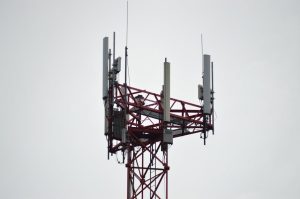
GEO Satellites: Revolutionizing Global Communication and Navigation
GEO satellites, or Geostationary Earth Orbit satellites, are a type of satellite that orbits the Earth at an altitude of approximately 35,786 kilometers, remaining stationary relative to a fixed point on the equator. This unique characteristic allows GEO satellites to provide continuous coverage of a specific region, making them ideal for a wide range of applications, including global communication, navigation, and weather forecasting.
GEO satellites have been in use for several decades, with the first GEO satellite, Syncom 2, launched in 1963. Since then, hundreds of GEO satellites have been launched, providing a wide range of services, including television broadcasting, telecommunications, and navigation. The use of GEO satellites has revolutionized the way we communicate, navigate, and access information, and has had a significant impact on the global economy and society.
Applications of GEO Satellites
GEO satellites have a wide range of applications, including:
High-speed internet access: GEO satellites can provide high-speed internet access to remote and underserved areas, where traditional fiber-optic connectivity is not available. This has enabled millions of people around the world to access the internet, and has had a significant impact on education, healthcare, and economic development.
Television broadcasting: GEO satellites are used to broadcast television signals to a wide audience, providing access to news, entertainment, and educational programming. This has enabled people in remote and underserved areas to access information and entertainment that was previously unavailable to them.
Navigation: GEO satellites are used in navigation systems, such as GPS, to provide location information and timing signals. This has enabled accurate navigation and timing, and has had a significant impact on transportation, logistics, and other industries.
Types of GEO Satellites
There are several types of GEO satellites, including:
Communication satellites: These satellites are used to provide telecommunications services, including telephone, internet, and television broadcasting.
Navigation satellites: These satellites are used to provide navigation services, including GPS and other satellite-based navigation systems.
Weather satellites: These satellites are used to monitor weather patterns and provide weather forecasting services.
Challenges and Limitations of GEO Satellites
While GEO satellites have many benefits, they also have some challenges and limitations. These include:
Signal delay: Because GEO satellites are in a high orbit, there can be a significant delay between the time a signal is transmitted and the time it is received. This can make real-time communication and navigation more difficult.
Interference: GEO satellites can be affected by interference from other satellites and terrestrial sources, which can impact their performance and availability.
Orbit congestion: The GEO orbit is becoming increasingly congested, which can make it more difficult to launch new satellites and can increase the risk of collisions and other accidents.
Future of GEO Satellites
The future of GEO satellites is likely to be shaped by advances in technology and changes in the market. Some of the trends that are likely to impact the future of GEO satellites include:
Increased demand for high-speed internet access: As more people around the world demand high-speed internet access, the demand for GEO satellites is likely to increase.
Advances in satellite technology: Advances in satellite technology, such as the development of more efficient propulsion systems and more advanced communication equipment, are likely to make GEO satellites more efficient and effective.
Changes in the market: Changes in the market, such as the increasing demand for satellite-based services and the growing competition between satellite operators, are likely to impact the future of GEO satellites.
